The post The Most Stunning Art Deco Buildings in London | United Kingdom appeared first on Europe Explored.
]]>Battersea Power Station
 Battersea Power Station is made up of two power stations, named A and B, and remains the largest brick building in the Europe. The first power station was built just before world war two, and the second power station became operational in 1953. Until 1983, Battersea Power Station was used as a coal-fired generator of electricity. It is a Grade II listed building and was designed by architects Sir Giles Gilbert Scott and Theo J. Halliday. Art deco fittings in the control room of A station displayed the influence of Halliday. It was recently purchased and will be redeveloped as a multi-purpose housing complex – although a mandate remains that the facade and any listed part must be maintained.
Battersea Power Station is made up of two power stations, named A and B, and remains the largest brick building in the Europe. The first power station was built just before world war two, and the second power station became operational in 1953. Until 1983, Battersea Power Station was used as a coal-fired generator of electricity. It is a Grade II listed building and was designed by architects Sir Giles Gilbert Scott and Theo J. Halliday. Art deco fittings in the control room of A station displayed the influence of Halliday. It was recently purchased and will be redeveloped as a multi-purpose housing complex – although a mandate remains that the facade and any listed part must be maintained.
Photo of Battersea Power Station, London, UK by Aurelien Guichard
BBC Broadcasting House
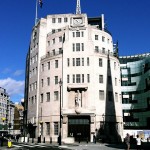 Broadcasting House is the home of the world renowned British Broadcasting Corporation. Designed in an art deco style, work on the building began in 1932, and was completed in two years. The building’s exterior was designed by George Val Myer, with help from M T Tudsbery, who was a civil engineer employed by the BBC. The interior of the building was designed by Raymond McGrath. Currently, Broadcasting House is being renovated and is home to Radio 3 and Radio 4.
Broadcasting House is the home of the world renowned British Broadcasting Corporation. Designed in an art deco style, work on the building began in 1932, and was completed in two years. The building’s exterior was designed by George Val Myer, with help from M T Tudsbery, who was a civil engineer employed by the BBC. The interior of the building was designed by Raymond McGrath. Currently, Broadcasting House is being renovated and is home to Radio 3 and Radio 4.
Photo of BBC Broadcasting House, London, UK by keriluamox
Claridge’s
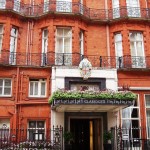 Claridge’s is one of the most famous luxury hotels in London, and opened in 1812, when it was originally called Mivart’s Hotel. The Claridge family purchased the hotel in 1854. A visit by Queen Victoria boosted Claridge’s reputation as an elite hotel, and it has had entertained an exclusive host of guests down the years. The original Claridge’s hotel was replaced in 1898 by George Trollope & Sons. Claridge’s was to become recognised as a fine example of art deco style, when Basil Ionides re-designed both the hotel’s restaurant and some of its suites in the 1920s.
Claridge’s is one of the most famous luxury hotels in London, and opened in 1812, when it was originally called Mivart’s Hotel. The Claridge family purchased the hotel in 1854. A visit by Queen Victoria boosted Claridge’s reputation as an elite hotel, and it has had entertained an exclusive host of guests down the years. The original Claridge’s hotel was replaced in 1898 by George Trollope & Sons. Claridge’s was to become recognised as a fine example of art deco style, when Basil Ionides re-designed both the hotel’s restaurant and some of its suites in the 1920s.
Photo of Claridge’s, London, UK by Ewan Munro
OXO Tower
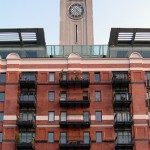 Built in the late 1800s, the Oxo Tower’s origins were as a power station. It obtained its current name after being bought by the manufacturers of the Oxo cube, the Liebig Extract of Meat Company. The original building was radically redesigned by Albert Moore in the late 1920s, when, notably, the word ‘Oxo’ was spelt out by the two circles and cross design. It was designed in a way that reflected the popularity of art deco at the time. It was in the 1990s that the Oxo Tower became used as a multi-purpose building that included shops, a restaurant, space for exhibitions, and even housing.
Built in the late 1800s, the Oxo Tower’s origins were as a power station. It obtained its current name after being bought by the manufacturers of the Oxo cube, the Liebig Extract of Meat Company. The original building was radically redesigned by Albert Moore in the late 1920s, when, notably, the word ‘Oxo’ was spelt out by the two circles and cross design. It was designed in a way that reflected the popularity of art deco at the time. It was in the 1990s that the Oxo Tower became used as a multi-purpose building that included shops, a restaurant, space for exhibitions, and even housing.
Photo of OXO Tower, London, UK by ChrisO
Royal Institute of British Architects
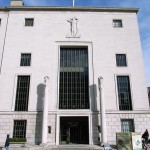 Home of the Royal Institute of British Architects, architect George Grey Wornum designed the Portland Place art deco building, which was opened in 1934 by King George V and Queen Mary. Wornum’s design was deemed to have been the best out of 3,600 submitted entries. It is a Grade II listed building, and the general public have access to the library and exhibition galleries. Also included in the building is a restaurant, cafe and bookshop. For any fan of Art Deco style, this building is not to be missed.
Home of the Royal Institute of British Architects, architect George Grey Wornum designed the Portland Place art deco building, which was opened in 1934 by King George V and Queen Mary. Wornum’s design was deemed to have been the best out of 3,600 submitted entries. It is a Grade II listed building, and the general public have access to the library and exhibition galleries. Also included in the building is a restaurant, cafe and bookshop. For any fan of Art Deco style, this building is not to be missed.
Photo of Royal Institute of British Architects, London, UK by Oxyman
Wandering the streets of London is a great way to experience the myriad of styles dotted all over the city – and Art Deco lovers have plenty to feast their eyes on.
Mike is a freelance writer who loves exploring the architecural feats of the great city of London. Mike is currently writing on behalf of Claridge’s hotel – a world famous luxury hotel who also offer private dining.
The post The Most Stunning Art Deco Buildings in London | United Kingdom appeared first on Europe Explored.
]]>The post How the London Underground has Changed appeared first on Europe Explored.
]]>
London underground / Amanda Vincent-Rous
The Underground, like all train-lines, has to be reliable and fast; if it isn’t, then people are late for work, the companies fail to make profit and the economy suffers. While Britain is far from having the most reliable and on-time underground system, it is still very impressive – just don’t expect to be comfortable in the tubes.
As a result, the London Underground has changed quite a lot over the years. As the world’s first underground railway, 1863 was an important year for London’s transport vision. While the official title of ‘London Underground’ would only come into play in 1985, the underground rail network in London has been in full flow for well over a century, transporting passengers on a daily basis.
Now carrying three million passengers every day, the London Underground is a business in itself, but it hasn’t always been like that. Back in 1863, the first line was laid and stretched just under four miles between Paddington and Farrington Street. It wasn’t much, but it was a start of something that would turn into a massive line of railway across the capital.
1880 saw the opening of the first Tube tunnel, from the Tower of London to Bermondsey, which represented another milestone and leap for the evolution of the railway network underground. As the world entered the 20th century, electric lines were introduced to the District and Circle route, cementing the future of the concept.
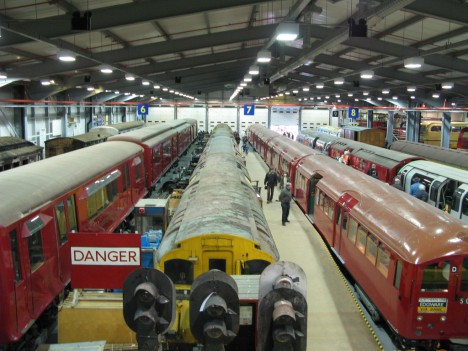
London transport museum / Julian Tysoe
Changes and additions to lines and new stations were made as the decades rolled by until the exciting introduction of dot-matrix train destination indicators in 1983. This was perhaps a big sign of the more modern-approach to the London Underground as we pushed towards the end of the 20th century.
Tragically, the late ‘80’s saw a fatal fire at King’s Cross killing 31 people which not only shook the nation but called for new safety and fire regulations to be introduced. As we welcomed in the 21st century, 2002 saw the Oyster card for the first time in the London Underground – something that is still used to this day.
It may not be comfortable in the tubes for the passengers – especially at peak times – but the Underground remains a massive part of people’s everyday lives for commuting and pleasure. Who knows where the London Underground is going in the next 100 years (my money is on maglev technology), but one thing is for certain: it will definitely still be there!
This gaze at the glorious London undergound was contributed to us by chessingtonholidays.co.uk – hoping you’ll pay a visit next time you’re in London!
View How the London Underground has Changed in a larger map
The post How the London Underground has Changed appeared first on Europe Explored.
]]>The post Manchester Airport Hotels Are Lovely To Stop In | United Kingdom appeared first on Europe Explored.
]]>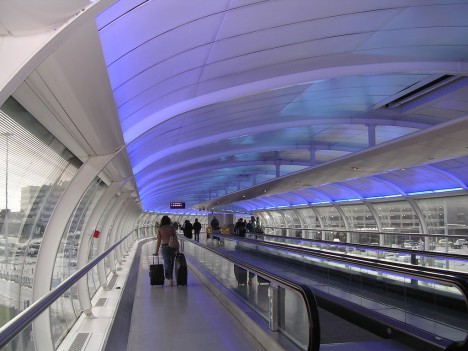
Photo licensed under the Creative Commons, created by Terry Whalebone
Very few airports in the world can handle what is known as “Code F” aircraft, but this one can, and in fact, has been having the Concorde land there for a long time. Now it even handles the Airbus A380, which is currently the biggest passenger airliner today. This plane is even a double decker besides being a wide-body.
Wartime and After
During its time, the Ringway Airport was of tremendous importance to the RAF, and this location trained a great number of parachutists. Its various terminals have been added to since the war of course, and there is a tremendous amount of room for expansion, especially since the 1972 opening of the M56 motorway for use to reach the airport. Furthermore, since wartime, sky links and travelators have also been added.
Currently, the airport boasts three separate terminals all of which are in constant use. Also added have been special rooftop smoking terraces, many additional executive lounges as well as some great shops and of course restaurants. Evidently, the airport also has a very large World Freight Terminal that opened in 1986. Security at the airport is being handled by the Greater Manchester Police.
The Manchester Airport has its own railway station called the Manchester Airport Railways Station, and it came into use in 1993. It currently has three different rail platforms handling over 300 trains per day to take care of the huge amount of people who come to the airport by train. The airport also receives over 500 buses daily as well as over 100 coaches. There are plans to open a Manchester Airport tram station in 2016.
Aircraft Spotting
Because the public has always been interested in aircraft spotting, a Runway Visitor Park was opened in 2010. In addition, there is now a café and a store located there, which sells aviation-related items. A number of retired aircraft are available for sightseeing as well. Although there are a number of Manchester Airport hotel accommodation in the area, there currently is one hotel on Ringway road that also has a public house for those who wish to have a beer.
Accidents
Ever since the Manchester Airport has been open, there have been very few accidents. However, in March 1951, a cargo aircraft crashed, which was caused by icing in the carburetor intakes. The captain had unfortunately failed to utilise the plane’s heat controls. In 1957, a plane on final approach crashed due to flap failure. In 1967 a plane had to abort its approach to Manchester Airport and suffered a loss of engine power and therefore, crashed. Finally, in 1969, a small plane crashed on takeoff, and in 1985, a larger plane carrying 55 people suffered engine failure due to incorrect repairs, and it failed to take off causing a fire in the cabin.
Pam is a full time freelance writer and works on guest posting projects. If you are interested in her services please contact Pam at [email protected].
View Manchester Airport Hotels Are Lovely To Stop In United Kingdom in a larger map
The post Manchester Airport Hotels Are Lovely To Stop In | United Kingdom appeared first on Europe Explored.
]]>The post Unusual Bridges in the United Kingdom appeared first on Europe Explored.
]]>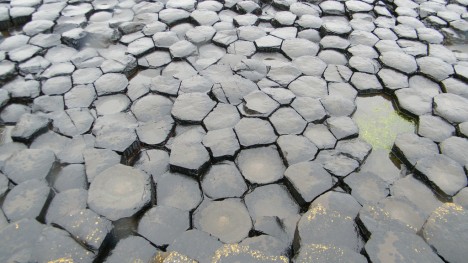
Photo licensed under the Creative Commons, created by Sean Lucas
The Giants Causeway
OK, so it’s not strictly a bridge, but you can’t make a list of bridge-like forms in the UK and Ireland without mentioning the Giants Causeway. It’s formed of about 400 interlocking basalt columns and is the result of an ancient volcanic eruption. In legend, the causeway was built by an Irish warrior named Fionn, in order to beat his Scottish challenger Benandonner. Fionn never faced his rival, but hid under a blanket and his wife Oonagh pretended that he was their baby. Benandonner is said to have seen this giant baby and fled in terror, imagining that Fionn must be huge indeed.
Chelmer Viaduct
A viaduct is a bridge composed of several small spans. They are often used to allow for multiple types of traffic to cross across a space. They can span land or water. The viaduct at Chelmer is due for refurbishment to turn it into a greater beauty spot. The current viaduct and bridge are both due for replacement because of their great age. To remain a functioning bridge and avoid being slapped with a weight restriction, the viaduct needs to be overhauled. They will be redesigned by a leading architecture firm – turning this old viaduct into one of England’s more unusual bridges.
Reflections Bridge, Loch Awe Scotland
With a very evocative name, the Reflections Bridge at Loch Awe Scotland is situated in one of the top 5 most beautiful Lochs in the country. Loch is the Scottish word for lake, and there are very many lochs in Scotland. Loch Awe is the longest inland loch, but not the largest by surface area (that’s Loch Lomond), or the deepest (Loch Ness). It’s pretty narrow, which means that building a bridge from one side to the other is a possibility. The Scottish lochs are known for their clear and still reflections, which makes the Reflections bridge a great place to take a camera and a must-see when visiting the North Argyll Glens.
Architectural landmarks are best when they complement nature and these bridges certainly do. Britain is known for the engineering explosion that took place in the 19th century and also for its stunning continuous coastline. There are 24 bridges in London alone and the longest of these is the Humber bridge.
Robert Jefferson is an English writer who likes writing about architecture, travel and unusual bridges.
View Unusual Bridges in the United Kingdom in a larger map
The post Unusual Bridges in the United Kingdom appeared first on Europe Explored.
]]>The post Carrick-a-rede Rope Bridge – one of the best tourist attractions in Northern Ireland | United Kingdom appeared first on Europe Explored.
]]>The bridge stretched local fishermen here in late April to September for more than 200 years, just for the salmon fishing season, but now there are very few salmon left. Therefore it is now only tourist attraction that is open for the whole year.
However, with approx. 250.000 visits a year it is one of the most visited attraction in United Kingdom.
View Carrick-a-rede Rope Bridge – one of the best tourist attractions in Northern Ireland United Kingdom in a larger map
The post Carrick-a-rede Rope Bridge – one of the best tourist attractions in Northern Ireland | United Kingdom appeared first on Europe Explored.
]]>The post Stonehenge – the well-known prehistoric stone monument in England, United Kingdom appeared first on Europe Explored.
]]>The site and its surroundings were added to the UNESCO’s list of World Heritage Sites in 1986 in a co-listing with Avebury Henge monument. It is a national legally protected Scheduled Ancient Monument. Stonehenge is owned by the Crown and managed by English Heritage, while the surrounding land is owned by the National Trust.
View Stonehenge — the well-known prehistoric monument stone monument in United Kingdom in a larger map
The post Stonehenge – the well-known prehistoric stone monument in England, United Kingdom appeared first on Europe Explored.
]]>